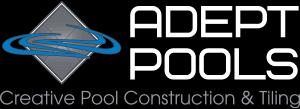The third sentence shows the additional topics other articles don’t address. This made sense because most people aren’t hand coding their websites. They want to know how to accomplish this task using their website building platform. As you can see on the infographic above, you want to focus on keywords that are closest to the center of the dartboard. For example, if all the top ranking pages are outdated, slow loading, incomplete, have terrible designs, or something that could be improved, we noted it in here. Before going to the “Done” pile, articles spent a few weeks in “Completed – Distribution” because articles need to be promoted, shared, and receive backlinks in order to rank.
Before you even begin the search for an SEO agency, it’s important to know the answers to many different questions. As the leading organic SEO company in the United States, we’ve been driving success for businesses with SEO since 1995. If you want an SEO agency like ours to take a look at your current SEO situation, don’t hesitate to contact us! We can give you a free proposal on how you can rank better and drive quality leads and sales for your business. That’s not to say that publishing this type of content will automatically result in links. But, at least according to this study, it can increase the odds that other people will link to you.Second, create content with a “hook”.
- But whatever the format is, the content is always discovered by links.
- SEO stands for search engine optimization, which is the process of improving a website’s visibility in organic search results on Google and Bing, or other search engines.
- Consistent effort is required to create SEO-friendly content that your target audience finds valuable.
- However, when the budget runs out, visibility often drops to where it was before the campaign launch.
- This is a part of SEO called “local SEO” that is especially useful for local businesses, which is a topic for another time.
When someone’s scanning Google’s first page results, they rely largely on title tags to figure out what they should click on. Specifically, before I write a single word, I figure out my target keyword’s Search Intent. On the other hand, this keyword isn’t super competitive, has a high CPC and gets a decent number of searches every month.
Customer data and behavior analytics tools can give content managers insight into the kind of content site visitors want. In some cases, an organization might only want to use one of these strategies. For example, organizations with a limited marketing budget might want to focus strictly on SEO. On the other hand, marketing teams that need quick results or lack the resources to create optimized content choose to focus on SEM. However, once organizations can supplement their SEO strategies with SEM, they typically do. Companies use paid advertising to appear on the first page of search results, but most traffic still comes from organic or unpaid, searches.
First, you need to learn how search engines work, as their advanced algorithms power the search results and determine where websites appear in the search results. It’s a very effective digital marketing technique, but it takes time to work. Build Credibility With Users – Users trust search engines, and having a presence in the top positions for the keywords the user is searching increases the website’s trust. Enhance User Experience (UX) – SEO is not only about search engines but good SEO practices improve the user experience and usability of a website.
Key Elements of a Successful SEO Strategy
And if you want a few of these handy outlines, I recommend checking out my guide to writing blog posts. This guide contains five detailed templates that make creating super high-quality content much easier than starting from scratch. When you optimize a title tag with a target keyword, SEO Anomaly it gives the search engine more opportunities to discover your website and rank it higher.
Key Technical SEO Factors
For example if you’re writing a page that will appear on a blog internal to your website, you could use a URL slug that reflects your site hierarchy. On this page, squarespace.com/blog/on-page-seo indicates that this page lives on the website’s blog and is focused on on-page SEO as a topic. Add your relevant H2s, H3s, and further headings using both primary and secondary keywords where applicable. Make sure your content is both valuable and unique for readers, and that it matches their search intent—what they’re looking to get out of visiting the page.
Internal links are helpful to users because they help them find related content on your site. Like most keyword tools, Sitechecker generates a list of terms based on the seed keyword that you type into it. Fortunately, there are a handful of free SEO tools that make finding popular keywords a breeze. I’m peeling back the layers on how to seamlessly weave SEO magic into your writing. Let’s dig into the practical tips for making your content not just seen but loved by both users and algorithms.
Building internal links or hyperlinks to other content on your site can help search engines learn more about your site. Technically, the clicks from organic search are free, but ranking your website to get those clicks requires time, effort, and potential financial investment. You might need to invest in SEO tools, hire experts, or spend significant time learning and implementing SEO strategies yourself.
It might mean highlighting hands-on experience, certifications, or testimonials. A professional-looking website is another way to signal your trustworthiness. A link (or backlink) is an HTML hyperlink pointing from one site to another. SSL (Secure Sockets Layer) certificates are small files installed on a web server which act as a security measure for websites. Although only a simple text file, not setting it up correctly can seriously mess with your site’s indexing.

